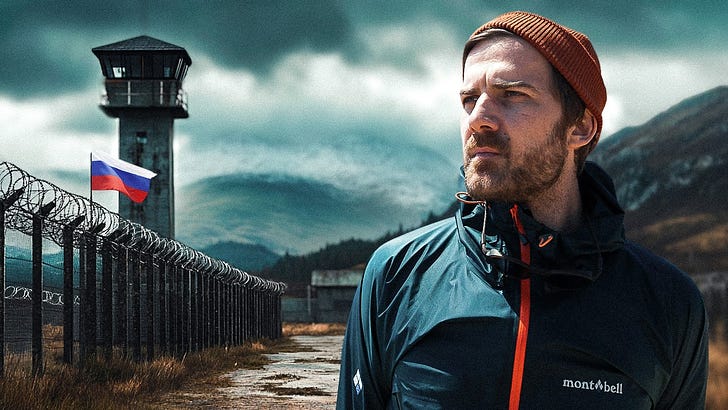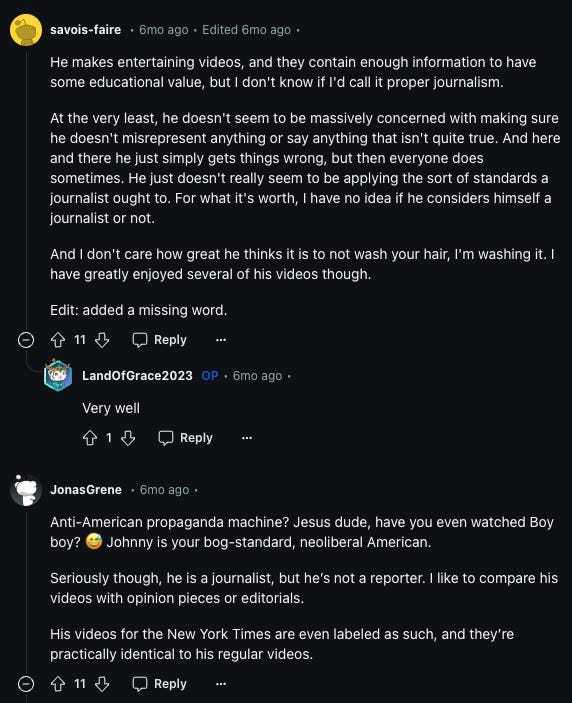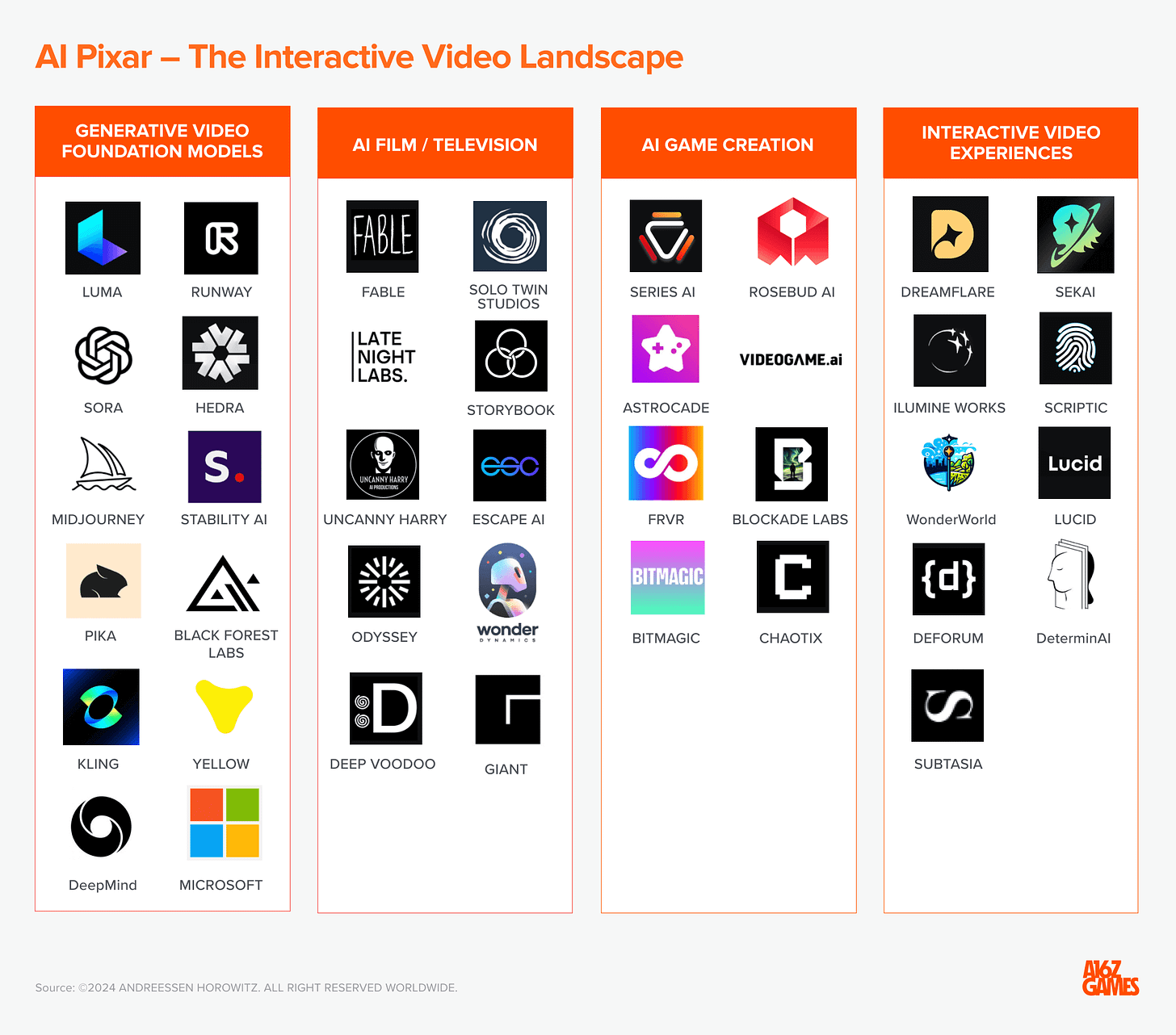#37. Waiting for the Barbarians
This week: Johnny Harris, storyteller from the edge of the world // The newsletter - now free for all // Plus this week's reads, news and must sees in the Creative R&D ecosystem
So let’s get back down to business.
Friends, it’s been too long. Last week’s post was a nice reminder that there’s lots of you out there, and there’s still a lot of stories to tell.
As I said in that post, the newsletter is now free for everyone. For all paid subscribers, i’m going to work through cancelling your direct debits, but please press the button first if it takes me a few days to get there. And thank you for your support, it means a huge amount.
This week’s post is going to look at digital journalist Johnny Harris, a foreign correspondent for the post-newspaper world. And then there’s A LOT of news to catch up on after two months away.
Batter up!
News! // A foreign correspondent between two worlds
I’ve tended to look for digital makers in fairly niche corners to talk about in this newsletter.
Film makers like Kane Pixels; the brilliant DJ horsegiirl and others we’ve talked about may have millions of views, but they live on the cultural fringes.
Journalist Johnny Harris feels less obscure. His independent journalism - or whatever we should call it - is part of a new category of truth-telling that exists beyond traditional media. But he’s a bi-product of a very mainstream journalistic tradition, and he wrote for the New York Times and Vox before going solo.
The Foreign Correspondent is a fundamental cultural figure of the 19th and 20th centuries.
When Mr William Howard Russell of The Times checked into a hotel in Washington at the height of the American Civil War, he was the first of a new kind of media-icon: the writer of the First Draft of History.
Through the Civil War, the world-wars and into Vietnam, Iraq, Afghanistan and beyond, the Foreign Correspondent was the grizzled voice of truth, covered in blood and ink, dirt and sand, half-drowned in whisky and boiled in cynicism at the state of the world. They’re a myth of modernity.
Foreign Correspondents mattered because they not only saw history happen, but they also put a shared set of values of the media they worked for, the culture they came from, and the readers and viewers they spoke to and for, to a test in the face of the harshest of realities.
But the Foreign Correspondent, in face of a digitising news and media market, is fading into obsolescence. Foreign Policy tells the story:
Today, this kind of old-school foreign reporting has almost disappeared. That has a significance far beyond the journalist profession. Without a solid basis in deeply reported, well-sourced facts from around the globe as a counterweight to the social media-driven flood of narratives, opinion, and disinformation, it becomes ever more difficult to have an informed public debate about foreign-policy choices—in Foreign Policy or anywhere else.
The stories Foreign Correspondent’s told were the jump-off points for informed public debate - the revelation of horror in the death camps or Cambodia, the false promises justifying war in Iraq. They provided the raw matter for our understanding of the world.
But not now.
As old media fades, who the Foreign Correspondent speaks for and why is thrown into question.
Johnny Harris is the William Howard Russell of this new world of witnessing history as it happens - and like everything in the digital world, it’s in the sometimes hard to see differences in what he does from what went before that changes everything.
If you’ve not watched a Johnny Harris video, his pieces on geopolitics go to the heart of what makes him interesting - and complicated.
He’s doing here what John Simpson did for the BBC for so many years, or Robert Fisk for The Independent: putting himself in the place where the world and its values are most in doubt.
The scenes here where he’s walking along the border between Georgia and the Russian-occupied territory carved out within it are very powerful.
He feels so fragile. So exposed. So simply human. The clarity of the digital camera’s image leaves no mystery about what this far away, unknown place is like.
But when he’s out here - who does he speak for, and who would speak for him?
When the man or woman from The Times or The New York Times walked through the Civil War or Vietnam, they did so with their newspaper and their country behind them, and with access to their money and diplomats to help them when it went wrong. It gave them a veil of security even in the worst places.
Who’s behind Johnny Harris? Who’d step in if Putin’s intelligence got seriously interested in him the way they did with the Wall Street Journal’s Evan Gershkovich?
In the digital economy that connective tissue with institutions disappears.
Johnny’s out there, and formally, he’s alone.
YouTube wouldn’t step in to save him, nor could his funders on Patreon, nor his advertising partners like stock video footage plaform Storyblocks.
The difference in tone and implication between “New York Times journalist taken prisoner by Russian authorities” and “YouTuber taken prisoner by Russian authorities” is substantial. The New York Times implies a set of liberal democratic values, a specific type of socio-historic meaning.
But a YouTuber means … what exactly?
It wasn’t always this way - in his early days as a solo YouTuber, Johnny Harris caused a wave of controversy by making videos sponsored by the World Economic Forum.
It’s a stain he’s found hard to shift.
But the WEF is rootless, powerlessly powerful. No armies, no police, no special forces.
Harris has moved on. His work now speaks for and from a rootless, global world.
Alongside his brilliant looks at the edges of geopolitics - at what’s driving Putin, Xi, North Korea and Iran - he covers America’s own failings in detail in videos like How the U.S Stole and Island.
And - possibly inevitably - he goes in hard on Trump.
His outsider-ship to contemporary America is, I think, as deep as his outsider-ship to China, Russia and Iran.
And that’s the break.
Because he doesn’t speak for anyone - neither for media nor the shared values of a real-world community, he represents no more than himself and the fractured and fragmented communities of the internet. Because of that, whether he’s telling the truth or not seems always deeply in doubt.
Check the Reddit threads about his work and there’s a consensus distancing him from “real” journalism:
In the wyrd shadow realm of today’s digital, should we stop thinking about someone like Johnny Harris with the same standards as we’d apply to Robert Fisk or Don McCullin? Their lies and dramatisations mattered - in a world of untruths, do Johnny Harris’s?
Much as I like his work, I don’t think it’s in “journalism” as we’ve historically understood it that we go looking for the truth in the swirl of the internet.
It’s in much rawer materials.
At least since 2008, the modern primal act of pointing a mobile phone at history as it happened and pressing record has become the vessel for truth telling, and the anonymous figure in the crowd the primary witness.
The Foreign Correspondent that Johnny Harris still wants to be is just another storyteller. The truth comes with less mediation, at the direct contact point between bystander and history.
Maybe then Johnny Harris is closer to Kane Pixels,than he is to the Foreign Correspondents who came before him - another scion of a new way of seeing, and being, in the world. Another part of the disjunction between the digital and the analogue world, a mimicry of the past but radically distanced from it.
In a digital and geopolitical world where nothing can be trusted, Johnny Harris’ is a heroic voice for half-truths.
Right now, maybe we can’t ask for more than that.
Ideas // Happenings at the digital edge
Mein gott, there’s a lot of news to catch up on. Some of this is a month or so old now, but still feels juicy…
First up, AI-art uberlord Refik Anadol’s own museum, Data Land, will land at the Frank Gehry designed Grand LA in Downtown Los Angeles next year. The number in my head is 2.2 million - that’s how many people visitied TeamLab’s Borderless in Tokyo the year that it opened. This year they hit 2.5. If Refik can go bigger than that, his pre-eminence as the defining digital artist of his age is likely assured.
Whether generative AI will really be able to create sustained virtual worlds on the fly is still contested. But the step forward taken by Google Research in late summer, when they released a 20 second generative version of - inevitably - Doom, was unquestionably a big step. The story’s well told in The New Scientist
Another cool device to add to the list of those exploring the potential interactions between Gen AI and the real world. The TransferScope turns the real world into something else in real time. I’m not really sure what it’s for, honestly, but the magic of the transformation is obvious.
Forthcoming film The Brutalist is being trailed as a Godfather, a Raging Bull, a There Will Be Blood for the 2020s. Big, long, serious and very male, it looks great and looks like it wants to be great. I loved this interview with auteur Brady Corbet justifying the film’s four hour length.
Two bits of future gazing from venture capital. First up
Andreesen Horowitz give their take on how AI will bring film and games together into a new interactive narrative format which may be like a generative Bandersnatch (the interactive Black Mirror episode). Their landscape map is useful.
Second up is Hartmann Capital with a closer to market look at where AI is penetrating game production. This is seriously useful stuff - a deep dive into emerging toolsets where the benefits of AI are being stitched into every part of the game development process. MUST READ.
Next! In the last - now distant - issue of Creative R&D I talked about misinformation art, a genre which should exist but doesn’t quite. Of course, the week after, a game EXPLICITLY about misinformation comes out, leaving me looking as prescient as never…Dustborn takes place in a world where everything’s a lie. Nice review in the Guardian.
Ok, that’s enough for this issue.
As I said last week, we’re now going to be fortnightly so there’s a bit more time to gather and a bit more time to write - and a bit more time to breathe between the two.
See you soon.
NB: As an extra recommendation, whilst I was researching Johnny Harris I also stumbled on Boy Boy, a brilliant agit-surrealist pair. Check this:
NB,NB, the title’s a brilliant novel by J.M.Coetzee. Don’t watch the film, it’s appalling.
And whilst it’s called Waiting for the Barbarians, I’ve had Elvis Costello’s Watching the Detectives all through it… So let’s end with that.
TTFN.






